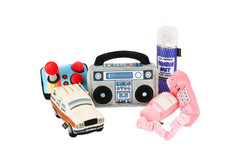In the past decade or so, airlines have reported quite an uptick in the numbers of support animals that are traveling on their planes. With the increase in numbers has come an increase in complaints; in the last couple of years, the public perception of support animals hasn’t exactly been favorable.
It’s important to note, though, that there’s more than one kind of support animal. Some of them are service animals, which are highly trained for a specific job. They tend to be dogs, and they almost always know how to behave in public. Other support animals are “emotional support animals”, or ESAs. They don’t have to complete any particular kind of training, and they can be pretty much any species under the sun, as long as they’re able to provide emotional support.
Why is the distinction between service animals and emotional support animals important? Well, when it comes to airlines and their customers, it seems to make a pretty big difference. The current laws include service animals and ESAs in the same category when it comes to plane travel – these animals can accompany their owners onto planes without fees, and with far fewer restrictions than ordinary pets. Unfortunately, this has resulted in multiple complaints about unruly animals on planes; in response, the DOT has announced pretty significant changes to their definition of “service animal”. These changes will mainly affect the way ESAs travel on planes, but there will be some adjustments for owners of service animals too.
The new regulations aren’t in place yet, though; if you’ll be traveling with your ESA before the changes take effect, here’s what you’ll need to know.
Get a letter from your mental healthcare provider. This letter should have the following characteristics:
- It should be less than a year old (calculated from your travel date)
- It should be printed on official letterhead
- It should specify that they’re your mental healthcare provider, and that you’ve been diagnosed with a psychological or mental disability
- It should state that your ESA is required for you to travel or otherwise function normally
- It should include information like the doctor’s license number, the issuing authority of their license, their contact information, etc.
- It should have their signature at the bottom
Note: this letter is not only required for all emotional support animals, but for psychological service animals as well.
Make sure you bring documentation from a veterinarian. This is where you’ll be documenting not only your animal’s overall state of health and their vaccination history, but also their size, weight, breed, etc. The veterinarian should also include their own notes on the animal’s suitability for travel inside the plane cabin; they may recommend that the animal is kept in a crate, muzzled, or transported with the cargo. Just like with the doctor’s letter, the documents from the vet should be less than a year old, and should include information on their license and how to contact them.
Confirm with the airline whether or not they require any kind of behavior-training documentation. Some airlines want to see that your animal has gotten formal training on how to obey basic commands, and how to relieve itself appropriately. If you’re submitting this documentation, include your own full name and contact information with the certification.
You might need to submit these forms up to 48 hours ahead of check-in, so get in touch with the airline well before your travel date. Each airline sets their own policies, and it’s always best to be prepared.
What are the biggest upcoming changes with the new regulations?
By far the biggest change will be for ESAs – they won’t have service-animal status anymore. Instead, they’ll have to comply with the same requirements as everyday pets, including the rules regarding restraints and size/weight limits for cabin travel.
Make no mistake, though; service animal owners will have to make changes too. For one thing, “service animals” will only include dogs as far as airlines are concerned. This means no more miniature horses, which are sometimes considered to be service animals; it also means no more pigs, cats, birds, rabbits, or any of the other species that are allowed to board planes as ESAs.
There will also be a limit of two service animals per person, and they’ll have to be harnessed or leashed while they’re in the airport or on the plane. While no specific breeds will be restricted, all service animals will have to be small enough to occupy their owner’s personal space (either on their laps or in their foot space). Just like before, airline staff will be keeping an eye out for dangerous or unruly behavior; if an animal seems like it would be dangerous to other passengers, it won’t be allowed to board the plane.
Service animal owners will also have to submit three different forms to the airline, which will be published by the DOT. These forms are the U.S. Department of Transportation Service Animal Air Transportation Health Form; the U.S. Department of Transportation Service Animal Air Transportation Behavior and Training Attestation Form; and the U.S. Department of Transportation Service Animal Relief Attestation. With these three documents, airlines can be satisfied that the service animal has the behavioral standards it needs to safely occupy a plane cabin with other passengers.
This seems like a setback for people with emotional support animals – what’s the takeaway here?
There’s no telling for sure how many people with ESAs are happy about the new rules, but it’s probably close to zero. Regardless of how their animal behaves, it’s likely that their ESA really is essential for them to be able to travel; it’s just too bad that the sheer number of ESA-related incidents prompted this kind of response. That being said, this doesn’t have to be the end of the road for anyone with an emotional support animal. If enough people step up to the plate and improve the standard of training for their ESAs, who knows how regulations could change in the future.







1 comment
Hi There!
I’m reaching out to you from Petsnap.com. Our team operates an extremely popular pet care site. We’ve had a few of our visitors mention your site recently, so I took a look and I’m happy to say that I was really impressed!
I’m interested in a possible article exchange between both of our sites as I am sure it will strongly benefit our sites in terms traffic.
Here is an example of the kind of search optimized articles that we write for our partners:
https://www.petsnap.com/how-far-can-a-dog-track-a-scent-stuff-you-should-know/
Just so we’re clear, we do this for free, in order to build relationships and to help our friends in the pet care and grooming community.
If you don’t want to write an article featuring your site on our blog, that’s no problem…we can offer you a link to your site on one of our current articles….and we will still be happy to write an excellent article for your site!
Please let me know your thoughts,
Thanks so much!
Sabrina
P.S. Not sure if you would be interested, but we can provide article writing services for your site as well. Space for this service is extremely limited though, so please let me know if you would like to discuss…